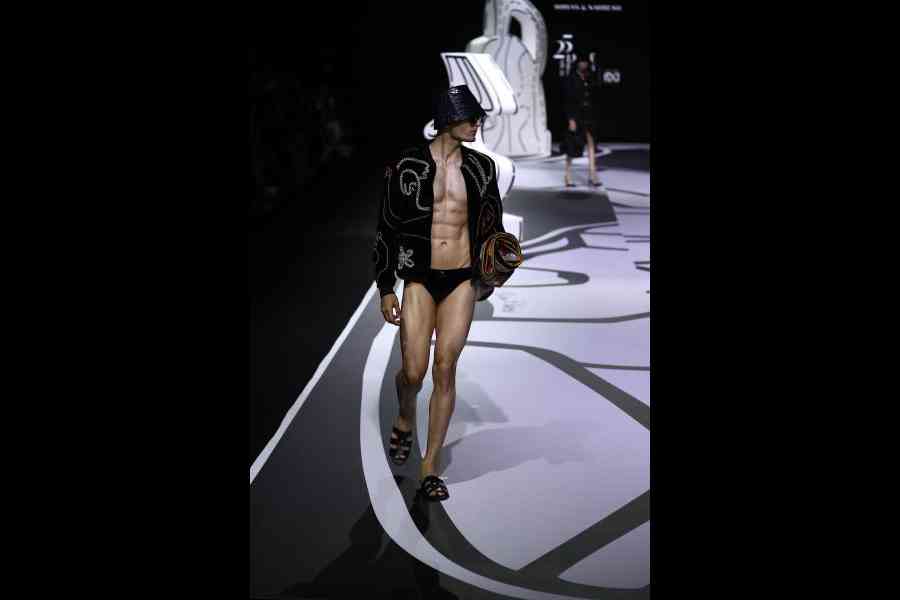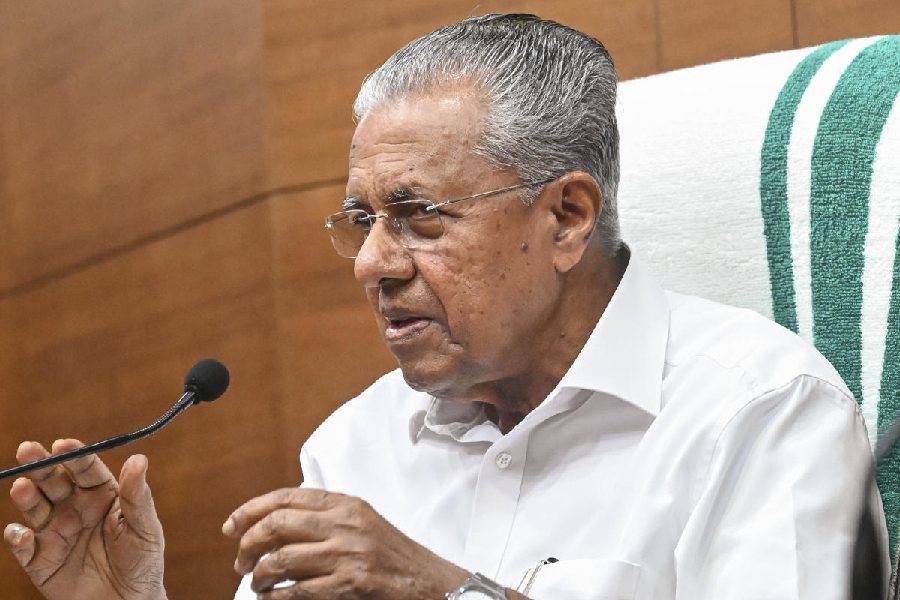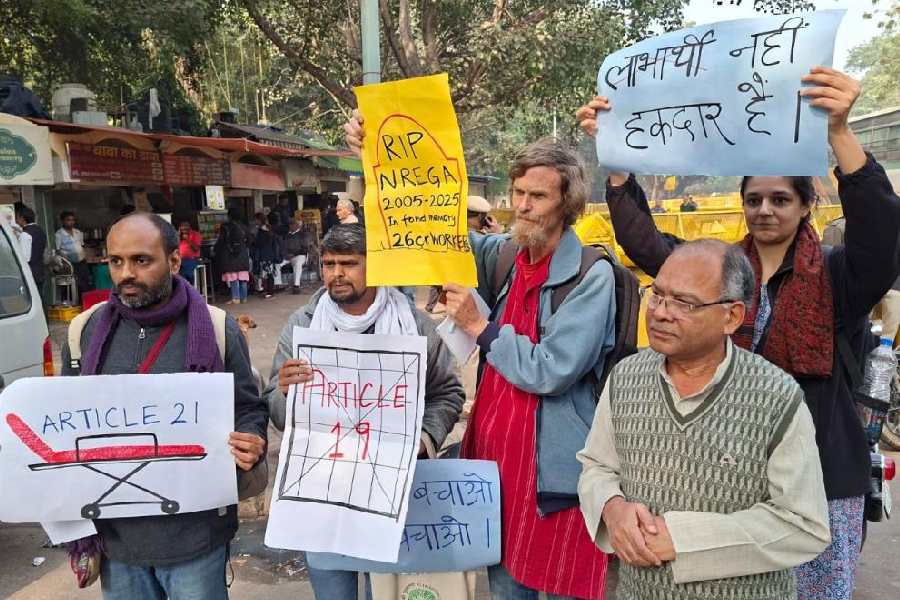We met designer Narresh Kukreja minutes before the Shivan & Narresh show at Lakme Fashion Week X FDCI, last month, in Mumbai. As we sat down to chat, we told him the sculptures on the ramp looked lovely. “Well, the central ramp hasn’t turned up, and they are creatively finding solutions. The printer’s printer broke down in the morning,” shared Narresh. Still smiling. Ace choreographer Anu Ahuja was on the microphone, instructing the models. Amidst the making of the show, Narresh chatted with t2 on the showcase and how the last 15 years had panned out.
What has the 15-year journey been like?
It’s the same excitement with which we started in 2010. You feel the heart race before the first model comes out on the runway. Nothing’s changed. I think the main reason for that is that we probably live for creation. And I think every time you create something, there is a pulsating excitement because you’re bringing something to life, and because that sentiment is still the same, it feels as if it was just yesterday. It really doesn’t seem like 15 years.
You’ve changed the landscape of how swimwear was consumed in India. What have been some of the milestone moments?
Oh, too many. Of course, the bikini sari, dressing Beyonce and Kim Kardashian, really bringing to life luxury lifestyle brands, ready-to-wear brands in India. I think the success of Shivan & Narresh, personally, to me, beyond our brand’s success, means that our country is finally ready to move on from occasion-driven brands to lifestyle and ready-to-wear brands. For me, the fact that our brand is successful means our country is ready now to move to the next phase of fashion.
Also making swimwear a fashion category, it happened with your brand. We’ve had many discussions about how women saw their bodies and how that changed with your label...
But at the end of the day, it’s a functional product. It’s a utility product. It’s something they want to use on an everyday basis. It was also probably always seen from the lens of sexism or gender, gender politics, or just always given a very different lens, while it’s nothing but like a T-shirt in your wardrobe, and why should it be just singled out so much? Why does it even have to wear the crown of choice of freedom? It’s like any other regular silhouette in your wardrobe, and it just needed to be as plain and simple as that, so that it’s not a big deal. Anybody can wear it, anywhere. And I think that normalisation is very important.
What is the biggest contribution you think the label has had, the myths you have broken and the dialogues you started?
Oh, that’s so many (laughs) but, I think self-love has been the biggest journey for the brand. Because this is an intimate brand, you will only endorse Shivan & Narresh if you can face yourself in the mirror. It’s for you, and it’s pure self-love, and that completely changes the dialogue that you have. And I feel very happy and successful that we as a country have reached this place of self-love, that’s beyond what your in-laws, husband, boyfriend or brothers are going to say.
Has it always been one-step-at-a-time for the label?
Honestly, you can’t think so much when you’re creating. You’re creating away from every other thought, just for the joy of creation and how that ends up changing the world is really beyond your control. And I think all we did was to take one step at a time.
Have your women patrons given you the confidence to push the limit a bit more?
One hundred per cent. Our entire brand trajectory has been womenswear to menswear, menswear to accessories to destination weddings to home, everything has been because it has been the women pushing us to say, now, give me this and that, and all we’ve just been is a good listener.
The women now are...
A lot more self-assured. It’s very difficult to say for all of them but generally speaking, we nudge them to go on this line of self-love. And I think whether we like it or not, we think fashion is very frivolous, but it is one of the most important tools when it comes to communication and empowerment, because you don’t do it for somebody else. You always do it for yourself, you know. I think with so many women across 15 years, they’re all in different stages of the spectrum of self-love, but the fact that there is a tool available, it just feels really great. You can walk into the store, go online, and experiment with how you see yourself and how you face yourself.
You’ve not ignored the men either...
It started as a guilty-purchase category. We were so busy dressing our women that it was the women who started to say, you know, you’re making me spend so much, give me something for my husband, boyfriend, brother and my dad. And then soon enough, about five-six years ago, we realised that both of us are also two men, who also live our own brand, and we need to bring the man in focus. It’s partially the reason why, on the 15th year, we’re doing the men dominated show.
I think men have again been the most ignored gender category when it comes to fashion in India. You’ll be shocked to know that our retail trajectory, when we used to put menswear in our womenswear store as a guilty-purchase corner, men used to walk in and say, ‘No, I want my own space because I don’t want to walk in with my wife. The moment we opened our exclusive men’s store, we had a 20-year-old boy shopping and also a 60-year-old man shopping, as if they were just waiting.
And they are not even a typical fashion man, but they were walking in. I think that’s the hunger when it comes to menswear, and particularly when you deal with a category like this, which is about holiday and freedom and just self-expression, men are trapped within official-wear and just very casual T-shirts, and there’s nothing in between, in the middle, for them to really talk about the personalities.
What lies ahead for the brand and for Indian fashion?
What lies ahead for us is now we started as a fully summer-dominating brand, and next 10 years, we’re going to be focusing massively on dominating winter holidays. Essentially, the idea is that no matter where you go, mountains, desert, sea or land, you have to think of Shivan & Narresh.
In Indian fashion history, I think it’s very exciting that finally we’re in this time on the trajectory of Indian fashion, where now it is going to be about ready-to-wear lifestyle brands, and this is what’s going to take the Indian retail economy up.
India needs to have brands in order to be what it needs to be by 2047 and this is the time for building ready-to-wear brands, from luxury to high street, but India needs to push out more brands. I am very excited that we’re ahead of that journey.










